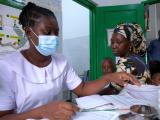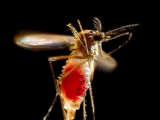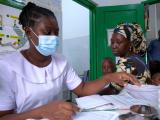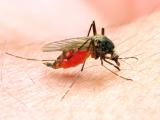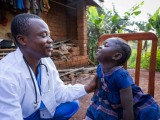Mar 21, 2011
Biodefense expert recommends keeping smallpox stockpiles
Another smallpox expert has weighed in on the fate of the world's remaining reserves of smallpox viruses, saying it would be unwise to destroy them lest potential discoveries be missed. In the journal Emerging Infectious Diseases, Raymond Weinstein, a clinical associate professor of medicine at Georgetown University School of Medicine in Washington, DC, and a research professor at George Mason University in Manassas, Va., writes, "Recent studies suggest that variola and its experimental surrogate, vaccinia, have a remarkable ability to modify the human immune response through complex mechanisms that scientists are only just beginning to unravel." He cites recent research that indicates HIV might have been suppressed by circulating smallpox viruses and says, "Eliminating all known remaining smallpox stocks might hinder ongoing research in this direction." Weinstein, whose research focuses on infectious diseases and biodefense, also adds as another important reason to maintain smallpox stockpiles, "Today's science is capable, through genetic manipulation, of re-creating a highly virulent smallpox-like virus from a closely related poxvirus or even from scratch. But perhaps what we should fear even more is nature creating it for us." The only known remaining stocks of smallpox virus reside in the United States and Russia.
Mar 18 Emerg Infect Dis article
DoD grant supports tests of simultaneous countermeasure vaccination
Inovio Pharmaceuticals, Inc., based in Blue Bell, Pa., today announced that it has received a US Department of Defense (DoD) grant to test the simultaneous delivery of DNA-based vaccines with the company's intradermal electroporation delivery system. The company said in a press release that the goal is to reduce potential immune interference that could occur when combination vaccines are formulated together. It said the device would allow the DoD, as well as the civilian population, to more quickly vaccinate troops against emerging disease or pandemic threats. The grant will allow the company to determine the optimal distance on the body between vaccination sites. Final testing will involve the delivery of Lassa and Hantaan virus vaccines simultaneously at different body sites. An earlier study on the vaccine combination suggested the two DNA vaccines worked well individually but lost potency when combined.
Mar 21 Inovio press release
Local health departments lose 19% of workforce
Local health departments have lost almost a fifth of their workforce since 2008, posing a "staggering challenge" to keeping Americans safe and healthy, according to a survey released today by the National Association of County and City Health Officials (NACCHO). NACCHO surveyed 2,107 local health departments (LHD; 82% response rate) from September to November 2010 on budget, staffing, and program cuts, and followed up with a randomized subset of 440 (74% response rate) in January 2011 on staffing issues only. The survey found that 6,000 LHD jobs were eliminated last year, bringing the total since 2008 to 29,000, or 19% of the LHD workforce. In addition 18,000 employees had their hours reduced. Forty percent of LHDs reduced services in at least one area, with maternal and child health the most frequently affected program. "These annual budget cuts and job losses threaten the ability of local health departments to prepare for and respond to emergencies, and provide basic services that all individuals and families count on," said NACCHO Executive Director Robert M. Pestronk in a press release.
Mar 21 NACCHO press release
NACCHO job loss survey findings
Polio vaccine campaign targets Somalian children
The United Nations (UN), its international partners, and local healthcare workers yesterday launched a polio vaccination campaign in Somalia with a goal of reaching more than 1.8 million young children. The UN said in a press release that Somalia has been polio-free for 4 years but is at risk of importing the virus from other countries such as Nigeria, where it still circulates. The 3-day campaign is the first of two polio immunization drives slated for this year, and officials hope to include 800,000 children in Somalia's south-central region who missed receiving the vaccine last year. Dr Martha Everard, the World Health Organization (WHO) representative in Somalia, said in the statement that the success so far shows that the disease can be eradicated, even in the most challenging settings, such as Somalia, where political insecurity threatens several regions.
Mar 20 UN press release
In a related development, Nigeria received a $60 million credit from the World Bank to help it eradicate polio, according to a Mar 17 statement. The World Bank said Nigeria is at a pivotal moment, because it experienced a 95% drop in polio cases from 2009 to 2010. It said despite the dramatic drop, polio immunization campaigns need to extend into 2011, given that the risk of resurgence remains high. The World Bank credit is Nigeria's third for polio. The funds allow the country to continue a "buy down" provision in which other partners such as the UN Fund and Rotary International, convert the credit into a grant, based on Nigeria's meeting predetermined conditions.
Mar 17 World Bank press release
Rwanda sees drop in malaria infections
A group reviewing Rwanda's progress toward eliminating malaria recently reported that the country has reduced the disease burden by 70% between 2001 and 2010, the New Times, a daily newspaper based in Rwanda, reported today. The group reported other positive indicators, such as improvements in case management and greater numbers of children receiving rapid treatment for malaria infections. Dr Corrine Karema, with Rwanda's national disease control center, told the Times nearly all households own mosquito nets, but more campaigns are needed to support their use. At a stakeholders meeting, officials signed a statement agreeing to work together to battle the malaria threat.
Mar 21 New Times story
In other developments, Canadian officials on Mar 18 announced that scientists from the country's National Research Council (NRC), based in Saskatoon, have achieved a breakthrough in a public-private effort to produce the malaria drug artemisinin more quickly and more affordably for developing countries. The plant that is used to make the drug grows primarily in Africa and Asia and is difficult to grow quickly when demand is high. NRC scientists discovered genes in the plant's metabolic pathway that are being used along with a yeast production platform developed at the University of California, Berkeley, to produce large amounts of artemisinic acid, a key ingredient used to synthesize the drug. The discovery came from an Institute for OneWorld Health initiative, which was supported by the Bill and Melinda Gates Foundation.
Mar 18 NRC press release
Vaccine, disease lead to similar novel H1N1 immune response
Children receiving one dose of pandemic 2009 H1N1 influenza vaccine had similar antibody responses to children who had contracted the disease, and immunocompromised children required two doses to achieve the same immune response, according to a Swiss study. Researchers studied 48 healthy and 27 immunocompromised children who received the Pandemrix (made by GlaxoSmithKline) or Focetria (Novartis) H1N1 vaccine, as well as 51 convalescent children. Both vaccines contained adjuvants. The vaccinated children's median age was 10.5, compared with 9.0 for the convalescent children. The 48 healthy vaccinated children had seroprotection rates of 98% as measured by hemagglutination inhibition (HAI) and microneutralization (MN) assays 4 to 6 weeks after vaccination, compared with 98% by HAI and 92% by MN in the 51 convalescent children 4 to 6 weeks after disease onset. The immunocompromised children had slightly lower seroprotection rates (HAI, 89%; MN, 85%) but similar antibody titers after two vaccine doses. The study also found that adverse events increased with age and were more prevalent with Pandemrix.
Mar 17 Vaccine abstract
